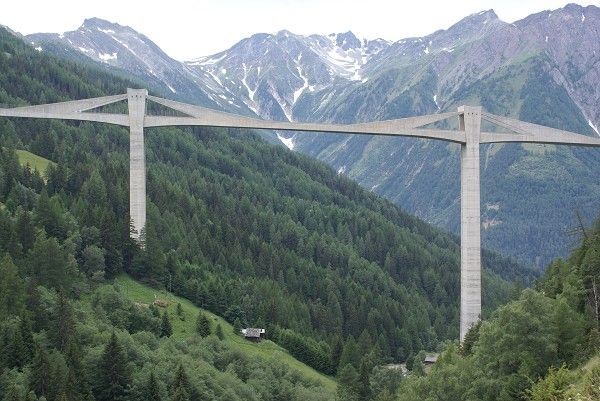In today’s post we are going to talk about one of my favorite kind of bridges: extradosed bridges. It’s not a common type of bridge. It is a mixture between cable-stayed and metal beam bridges built on the air and with a large variation of lights.
Let us talk about its origins. Then, we will move on to their work and on basic predimensioning criteria and, finally, we will tackle its advantages and disadvantages compared to other types.
Nowadays, there are two versions about the origin of extradosed bridges. The first one comes from Cristhian Menn’s concept, who in 1980 proposed the construction of Ganter bridge in Switzerland in order to save a valley of 140 meters of altitude using a superstructure made from a cable-stayed metal beam box with walls and rigid pillars to endure the windy climate.
Although, the configuration for the cables was innovative at the time, the structure was admire by its esthetic and its blending with the landscape.
The second version comes from the Mathivat concept, who proposed this type for the Arrêt Darré viaduct in France. Mathivat proposed a bridge in which the the internal binds of the pillar were replaced by external cables in a low tower over the supports. This solution meant 30% less material regarding the metal beam, as well as an adequate use of the cables. However, the proposal was rejected in the contest.
Regardless these two versions, the world first’s extradosed bridge was Odawara Blueway bridge in Japan, built in 1994 by japanese engieneers inspired by Mathivat’s proposal.


